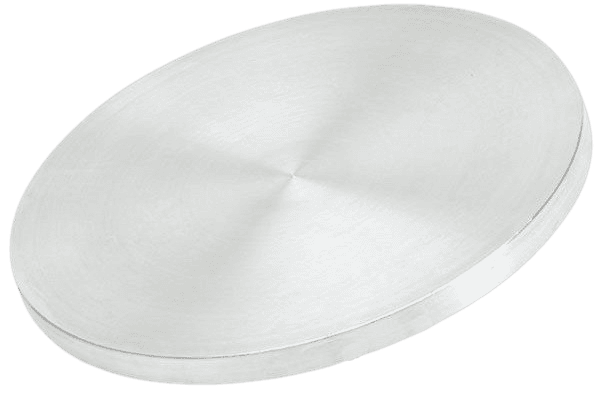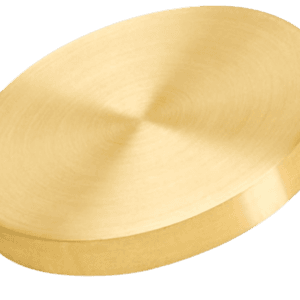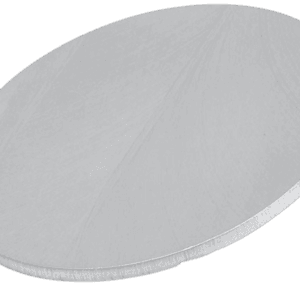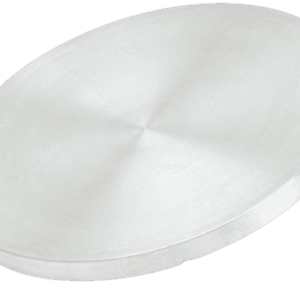Tungsten Niobium Sputtering Target Description
Related Product: Tungsten Sputtering Target, Cobalt Tungsten Sputtering Target
Tungsten Niobium Sputtering Target Specifications
| Compound Formula | W/Nb |
| Molecular Weight | 276.86 |
| Appearance | Silver Metallic Target |
| Available Sizes | Dia.: 1.0″, 2.0″, 3.0″, 4.0″, 5.0″, 6.0″ Thick: 0.125″, 0.250″ |
Tungsten Niobium Sputtering Target Handling Notes
Indium bonding is recommended for the Tungsten Niobium Sputtering Target due to certain characteristics that make it challenging for direct sputtering, such as its brittleness and low thermal conductivity. The material’s low thermal conductivity and susceptibility to thermal shock further highlight the need for proper bonding to ensure optimal performance during sputtering.
Tungsten Niobium Sputtering Target Application
Semiconductor Manufacturing: Tungsten Niobium Sputtering Targets are used in producing integrated circuits, microchips, and other electronic devices. They allow for the precise deposition of thin films for interconnects, barrier layers, and contact materials, ensuring reliable electrical performance.
Optical Coatings: These targets are employed in fabricating optical coatings for lenses, mirrors, and filters. The films deposited exhibit high reflectivity, low absorption, and excellent adhesion, which enhance optical performance and durability.
Aerospace and Defense: In the aerospace and defense sectors, Tungsten Niobium Sputtering Targets are used to coat components like turbine blades, fuel cells, and thermal barrier coatings. Their high melting point and mechanical strength make them suitable for extreme operating conditions.
Energy Storage: Tungsten Niobium Sputtering Targets are utilized in creating thin films for energy storage devices such as lithium-ion batteries and supercapacitors. The films enhance electrode performance, resulting in higher energy density and improved cycling stability.
Research and Development: These targets are valuable for scientific research and development, aiding in the study of material properties, exploration of new thin-film deposition techniques, and development of advanced technologies.
Tungsten Niobium Sputtering Target Packaging
We meticulously handle our Tungsten Niobium Sputtering Target during storage and transportation to ensure it remains in its original, high-quality condition.
Get Contact
TFM offers Tungsten Niobium Sputtering Targets in a variety of forms, purities, and sizes. We specialize in producing high-purity physical vapor deposition (PVD) materials with maximum density and minimal average grain sizes, making them ideal for use in semiconductor applications, chemical vapor deposition (CVD), and PVD processes for display and optical technologies.





Reviews
There are no reviews yet.